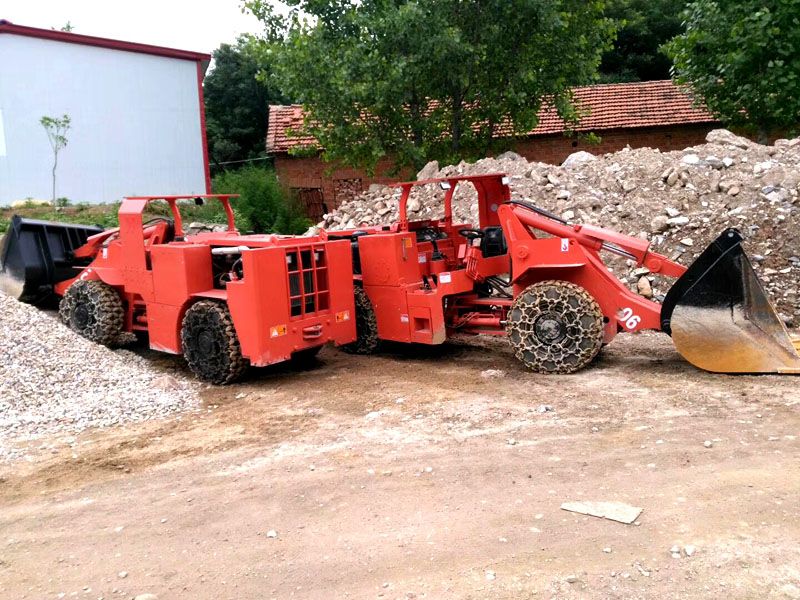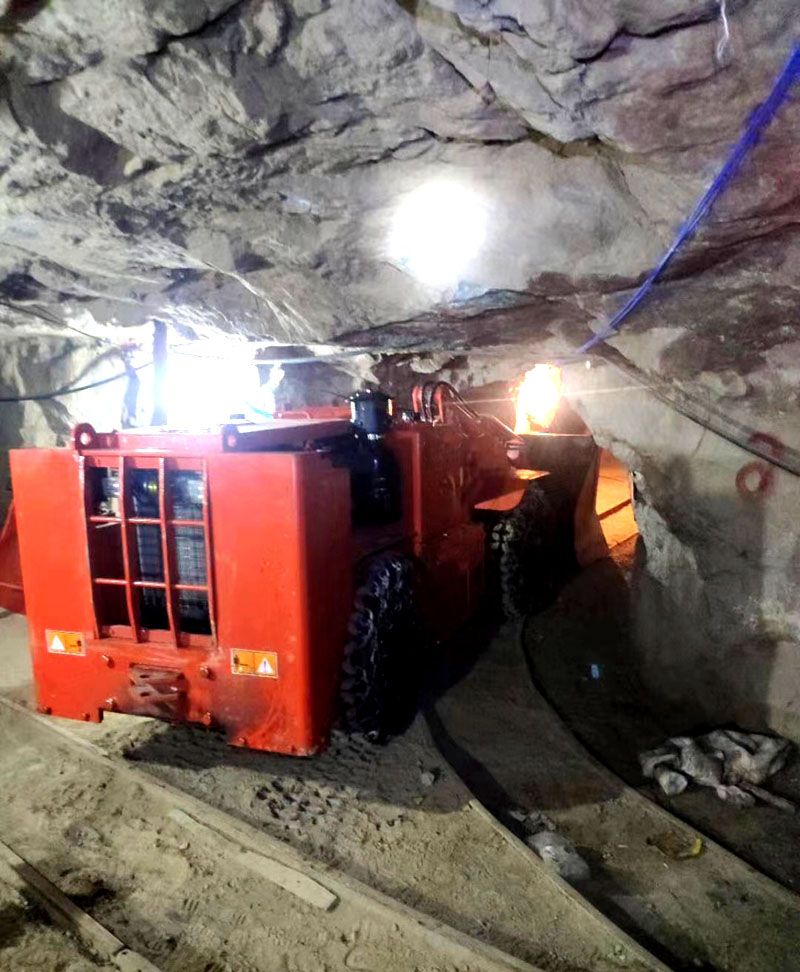Ultra-Compact Underground Mining LHD Loaders for Extra-Narrow Mine Tunnels
1 The Challenge of Extra-Narrow Tunnels in Small-Scale Mines
Small-scale underground mines—such as artisanal gold mines in Colombia’s Antioquia, tin mines in Bolivia’s Potosí, and zinc mines in Mexico’s Zacatecas—often have extra-narrow tunnels (2 meters or less) dug by hand or small machinery. These confined underground workings make standard LHD loaders (2.5 meters wide) unusable, forcing miners to rely on manual labor (shovels and wheelbarrows) or small, underpowered loaders that can’t handle heavy ore. This leads to low productivity (5–8 tons of ore per shift) and high injury rates from manual hauling. The underground mining LHD loader designed for extra-narrow tunnels solves this—ultra-compact, powerful, and agile, it fits in 2-meter-wide tunnels while delivering heavy-duty ore loading and hauling performance. These loaders transform manual, low-productivity mines into mechanized, efficient operations.
2 Ultra-Compact Dimensions: Fitting in 2-Meter Tunnels
The compact underground tunnel loader’s most striking feature is its size: just 1.8 meters wide and 2.4 meters tall, making it the narrowest LHD loader on the market. Its wheelbase is shortened to 2.2 meters, and it uses articulated steering with a 2.8-meter turning radius—allowing it to make U-turns in 2-meter-wide tunnels without scraping walls. A Colombian gold mine in Antioquia replaced its manual labor with this underground mining LHD loader and reported that the loader could navigate even the narrowest drifts (1.8 meters wide) that were previously inaccessible to machinery.
The loader’s cab is slimmed down to a single-seat design, with a curved dashboard that maximizes interior space while minimizing width. The driver’s seat is positioned 10cm higher than standard, providing visibility over the bucket and tunnel walls. Large side windows and a rearview camera eliminate blind spots, reducing the risk of collisions in tight spaces. “We were skeptical it would fit, but the underground mining LHD loader glides through our narrow tunnels like it was made for them,” said a mine supervisor in Bolivia’s Potosí.
3 Power & Payload: No Compromise on Performance
Ultra-compact design doesn’t mean sacrificing hauling power. The underground mining LHD loader is powered by a 75hp diesel engine that delivers 250 Nm of torque—enough to haul 5-ton loads of ore (gold, tin, zinc) through 20-degree inclines common in extra-narrow tunnels. The loader’s bucket capacity is 0.8 cubic meters, optimized for small-scale operations but capable of 8–10 loading cycles per hour. A Mexican zinc mine in Zacatecas reported that the loader could haul 40 tons of ore per shift—5x more than manual labor—while using just 6 liters of diesel per hour.
The bucket is made of 14mm-thick manganese steel, reinforced with additional wear strips along the edges to withstand abrasive ore. In Colombia’s gold mines, where ore is mixed with sharp quartz fragments, the bucket lasted 8 months—twice as long as the buckets on small generic loaders. The bucket’s teeth are made of carbide-tipped steel, which resists wear and improves penetration into ore piles.
4 Maneuverability in Confined Workings: Agile & Precise
Confined underground workings demand precise maneuverability, and the ore load haul dump equipment delivers with its articulated steering and responsive hydraulic controls. The loader can move forward, reverse, and turn within its own length, making it easy to load ore from the face and haul it to a small ore pass or truck. A Bolivian tin mine reported that the loader reduced loading time by 40% compared to manual labor, as it could position the bucket exactly where needed without repositioning multiple times.
The loader’s hydraulic system uses proportional controls, allowing the driver to adjust bucket height and tilt with fine precision—critical in narrow tunnels where overloading or spilling ore can block the passage. The Mexican zinc mine found that ore spillage dropped by 90% after switching to the compact underground tunnel loader, eliminating the need for time-consuming cleanup.
5 Maintenance & Safety: Designed for Small-Mine Operations
Small mines have limited maintenance resources, so the underground mining LHD loader is designed for easy, on-site maintenance. Critical components like filters, oil dipsticks, and hydraulic hoses are accessible from the side of the loader, requiring no disassembly. The engine is mounted on a sliding tray that can be pulled out for service, making it easy to access spark plugs and belts. A Colombian mine owner noted, “Our mechanic can do all the maintenance with basic tools—no need for specialists.”
Safety features are tailored to confined spaces: the cab is reinforced with manganese steel to protect against falling rock, and a ROPS (Roll-Over Protective Structure) and FOPS (Falling Object Protective Structure) are standard. The loader’s low noise level (70 decibels) improves communication between miners, reducing the risk of accidents in narrow tunnels.
6 Transforming Small-Mine Productivity & Safety
The underground mining LHD loader has had a transformative impact on small mines with extra-narrow tunnels. The Colombian gold mine increased monthly ore output by 400% (from 50 to 250 tons) and reduced miner injuries by 70% (no more back strain from manual hauling). The Bolivian tin mine cut labor costs by 60% by replacing 6 manual workers with one loader. The Mexican zinc mine reopened abandoned narrow tunnels (previously inaccessible to machinery), accessing ore reserves worth an estimated $1 million.
For small mines with extra-narrow confined underground workings, the underground mining LHD loader isn’t just equipment—it’s a pathway to growth and safety. It proves that even the smallest, most confined mines can benefit from mechanization, improving productivity and protecting miners. To learn more about our full range of mining solutions, please visit our company page.







